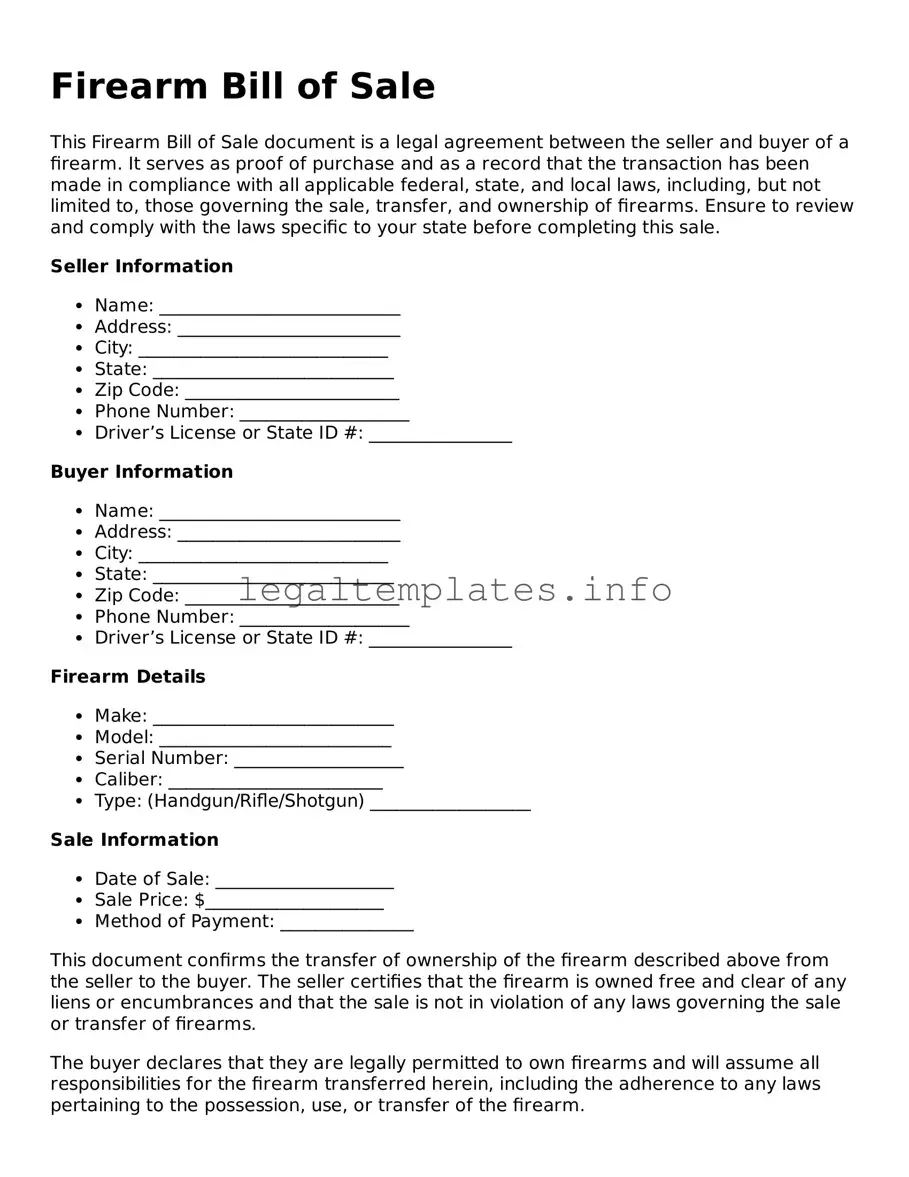Filling out a Firearm Bill of Sale form is a critical step in the private sale of a firearm, ensuring that the transaction is documented properly and legally. However, several common mistakes can compromise the effectiveness of this document, potentially leading to legal complications for both the buyer and the seller. Understanding these pitfalls can help individuals navigate the process more smoothly and securely.
One common mistake is the failure to verify the buyer's eligibility to purchase a firearm. It's imperative that sellers ensure the buyer has the legal right to own a firearm, which involves checking the buyer's identification and possibly conducting a background check, depending on state laws. Neglecting this step can lead to legal repercussions if the firearm ends up in the hands of someone prohibited from owning it.
Another error occurs when individuals neglect to include detailed descriptions of the firearm on the bill of sale. A comprehensive description, including the make, model, caliber, and serial number, is crucial for identifying the firearm. This detail enhances the document’s validity, serving as a valuable record in the event of theft or if the gun is later used in a crime.
Additionally, omitting the sale date and the sale amount from the Firearm Bill of Sale form is a significant oversight. These pieces of information establish the timeline of ownership and the financial terms of the agreement. Without them, the document lacks the specificity needed to protect both parties in disputes over ownership or questions about the legality of the transaction.
Some individuals mistakenly believe that a verbal agreement or a handshake is a sufficient substitute for a written bill of sale. This misunderstanding can lead to serious legal issues, as verbal agreements are difficult to prove and enforce. A properly executed Firearm Bill of Sale provides a physical record of the transaction, which is essential for both legal protection and personal records.
The absence of signatures is another critical misstep. Both the buyer and the seller must sign the Firearm Bill of Sale, as their signatures confirm that they have agreed to the terms of the sale, and acknowledge their understanding of their legal obligations regarding firearm ownership and transfer. Failing to obtain these signatures renders the document virtually useless for legal purposes.
Overlooking the need for witnesses or a notary can also undermine the document's integrity. While not always required, having the signatures witnessed or the document notarized adds an additional layer of verification and legality, making the bill of sale more robust against challenges.
Ignoring state-specific requirements is a common error with serious implications. Firearms laws vary widely across states, and some states have specific forms or additional requirements for a Firearm Bill of Sale. Sellers and buyers must familiarize themselves with these requirements to ensure their transaction complies with local regulations.
Inaccuracies in the personal information provided by the buyer or the seller, such as incorrect names, addresses, or identification numbers, can invalidate the document or, at best, complicate its use. Accuracy in these details is paramount for establishing the identity of the parties involved and for potential future legal needs.
Lastly, failing to retain a copy of the signed Firearm Bill of Sale is a mistake that can have long-term consequences. Both parties should keep a copy for their records to safeguard against legal disputes, questions of ownership, or for use in official inquiries. Proper documentation is key to ensuring peace of mind when transferring firearm ownership.
